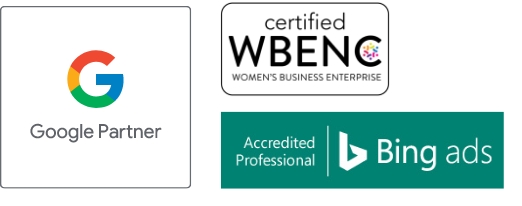
Learn How to Leverage Accenture’s 2025 Life Trends for Healthcare
In an ever-evolving world, the healthcare industry needs to stay ahead of the curve by recognizing and adapting to societal, technological, and economic shifts. The Accenture Life Trends 2025 report highlights transformative trends that can help healthcare marketers ensure their hospitals or healthcare systems maintain relevance while building meaningful connections with their audiences. Here are five key takeaways from the report, along with some practical considerations specifically for healthcare:
1. BUILDING TRUST IN A SKEPTICAL DIGITAL WORLD
With the increase in online scams, misinformation, and privacy concerns, healthcare consumers are becoming more cautious about who they engage with online and where they turn for information and services. Trust has become a critical factor in healthcare consumer relationships – whether those consumers are patients or providers. Healthcare organizations must prioritize transparency and accountability to reassure their audiences and establish credibility.
Ideas to Consider:
- Clearly communicate your healthcare organization’s values and commitments to data privacy on your website and in all marketing outreach.
- Showcase authentic patient and provider reviews and testimonials.
- Provide easy-to-find contact information and responsive customer support.
2. HELPING FAMILIES NAVIGATE DIGITAL CHALLENGES
Parents are increasingly concerned with how to protect their children from the negative effects of digital technology. In healthcare, that concern extends to managing digital health tools and avoiding misinformation about health and wellness. Families are looking for guidance and tools to manage these challenges, and healthcare organizations that position themselves as trusted partners can build meaningful connections with this audience.
Ideas to Consider:
- Create educational content for parents about the safe and effective use of health-related apps or digital health resources for children.
- Partner with local schools, pediatricians, or family wellness organizations to host workshops on managing digital health for kids and teens.
3. MEETING HEALTHCARE CONSUMERS’ NEED FOR SPEED AND CONVENIENCE
With information readily accessible at our fingertips, healthcare consumers are bypassing traditional methods to find peer-recommended solutions that save them time and effort. Telehealth, online appointment booking, and streamlined communication are now the standard for convenience. Marketers need to prioritize simplifying patient interactions with their healthcare providers and streamlining provider-to-provider referrals and information exchanges.
Ideas to Consider:
- Use straightforward language in your service descriptions and patient and provider communications.
- Make it easy for patients to schedule appointments, access records, and get in touch with healthcare professionals via user-friendly online portals or apps.
- Optimize your website and patient communication channels to be fast and intuitive, reducing friction during patient outreach.
- Partner with patient influencers or local healthcare advocates who can provide reviews or share experiences with your healthcare services, creating a more relatable connection.
4. CREATING A POSITIVE WORKPLACE CULTURE
Healthcare employees are the backbone of any system, and fostering a supportive, positive workplace culture directly influences patient care and outcomes. Employees are looking for more than just a paycheck. They want workplaces that respect their dignity, value their creativity, and balance human connection with technological efficiency. When healthcare professionals feel valued and empowered, they are more motivated, leading to better patient experiences and stronger patient-provider relationships.
Ideas to Consider:
- Recognize and celebrate the achievements of healthcare staff regularly, whether through awards, team recognition, or social media shout-outs.
- Invest in technologies that help healthcare teams work efficiently, but make sure those tools enhance, rather than hinder, their personal connections with patients.
5. DESIGNING EXPERIENCES THAT PEOPLE CRAVE
In the healthcare sector, patients are looking for more than just efficient service – they want an experience that feels personal, thoughtful, and caring. While technology can make healthcare more accessible, creating memorable, human-centric interactions will help build patient loyalty and positive word-of-mouth.
Ideas to Consider:
- Host patient-centered events, like health fairs or wellness workshops, where members of the communities you serve can meet your healthcare providers in person and engage with your services.
- Combine the ease of online healthcare tools, such as scheduling or telehealth, with tangible experiences like personalized follow-ups that make patients feel valued.
While not every idea may apply to every healthcare organization, these trends offer actionable pathways for healthcare marketers to adapt and stay competitive in a rapidly changing landscape. Accenture’s Life Trends 2025 report is a valuable resource for staying ahead of emerging shifts that will shape the future of healthcare marketing. By remaining open, flexible, and patient-focused, healthcare marketers can foster trust, engagement, and ultimately, better patient outcomes. Even small, intentional changes in how you approach your patients’ needs and provider communications can lead to meaningful improvements in your organization’s reputation and reach.
Ready to access other key insights to help you stay ahead of societal, technological, and economic transformations? We can help! Contact LIGHTSTREAM today.
